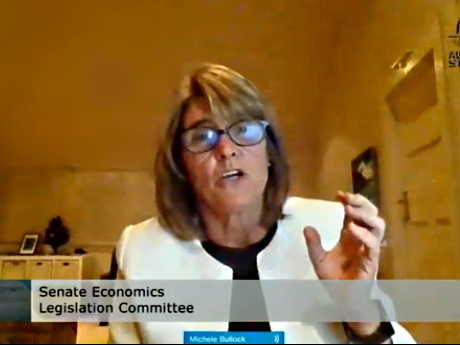
RBA governor Michele Bullock
The Reserve Bank of Australia, one of the higher cost operators in the domestic industry, proved an even more costly banker over the 2023 financial year.
Operating costs of A$501 million in 2022/23 represented a 16.6 per cent increase on the previous year, the RBA disclosed in its 2023 annual report published yesterday.
Staff costs increased by 16.9 per cent.
The RBA said this was due to “additional resourcing to support the bank’s strategic priorities (including data, payments services and technology resilience) and, to a lesser extent, salary increases stipulated in the Reserve Bank’s workplace agreement”.
If the RBA’s workforce and their union, the FSU, achieve their aims in the current round of bargaining, there will be another hefty rise in the RBA payroll in the current and future years.
It will not escape the notice of the Finance Sector Union that Philip Lowe, governor for the whole year covered by the annual report, received a 10.5 per cent bump in total remuneration over FY2023, to $1.15 million.
Michele Bullock, the deputy governor over the reporting period (and now governor) saw her pay skyrocket to $828,000, explained mostly by her promotion from assistant governor to the far better paid post of deputy in April 2022.
Whether Lowe was, and Bullock is, worth remunerating as Australia’s highest paid public servant will continue to be a subject for rich debate.
The bottom line from this final window into the Lowe era is: the RBA bottom line was (as expected) absolutely woeful.
Over the year to June 2023, the Reserve Bank of Australia recorded an accounting loss of A$6 billion, “mainly due to negative underlying earnings resulting from the higher domestic cash rate and valuation losses from a further rise in bond yields,” the RBA’s 2023 annual report states.
With the balance in the unrealised profits reserve and Reserve Bank Reserve Fund fully depleted from absorbing large losses last financial year, the accounting loss was added to accumulated losses.
Thus, the Reserve Bank was in a negative equity position of $17.7 billion at 30 June 2023, compared with $12.4 billion a year earlier.
The report goes on to assert: “The Reserve Bank board’s judgement continues to be that negative equity does not affect the bank’s ability to operate effectively or perform its functions, but that it is important that the Bank’s equity is restored over time.
“This can be achieved through the Bank retaining its profits over the years ahead.”
This means Treasury and the Albanese government are highly unlikely to be able to rely on any dividends to bolster the budget bottom line, not for many years to come.
“The Treasurer has indicated his continued support for this approach,” Philip Lowe noted in his foreword to the annual report, which was his last after seven complicated years at the helm.
One of those controversies related to the pandemic era bond buying and yield curve control program, which ceased in February 2022.
Total holdings of domestic securities decreased by $33 billion over FY2023 to $501 billion.
“Over the past year, assets held outright have declined, principally as some of the purchases made during the pandemic began to mature but also due to lower valuations as bond yields have risen,” the report notes.
The interest rate sensitivity of outright holdings in the domestic portfolio decreased from around five years to 4.2 years over 2022/23.
“The bank’s current approach is to hold these bonds until maturity, rather than selling them prior to that, in accordance with a decision of the Reserve Bank Board in May 2023,” the report discloses.
“Under the current approach, the return the Bank will earn on these bonds will be determined by the yield on each bond at the time of purchase and will not change with valuation gains or losses that result from fluctuations in yields.”
NOTE: On Monday, Banking Day published a clarification on the governor's remuneration.